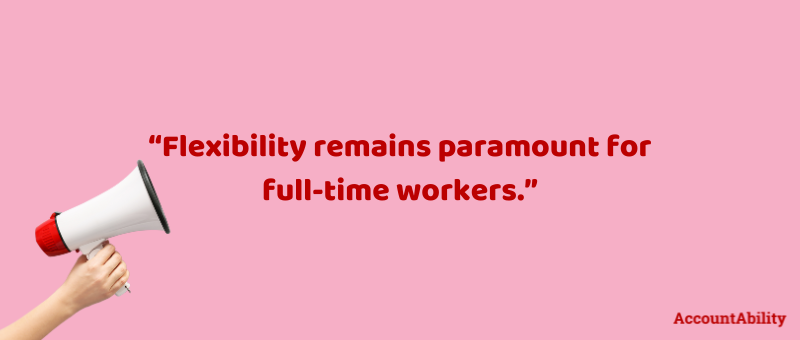Understanding what keeps employees engaged and satisfied is crucial for both employers and job seekers alike.
We recently conducted a survey that uncovered superior trends shaping employee retention and attraction for 2024. What we found sheds light on the developing priorities and expectations within the workforce.
Benefits
Consistency seems to be key, as the top three factors influencing employees' decision to stay in their roles have remained unchanged for several years:
Salary
Culture
Flexibility
However, what's noteworthy is the shifting emphasis within this trio.
Culture, once a contender for the third spot, has now climbed to the top spot, signalling its growing significance in the eyes of employees. This shift highlights the increasing recognition of the pivotal role organisational culture plays in fostering employee satisfaction and loyalty.
Beyond the traditional triad, we observed a rising interest in additional perks and benefits offered by organisations, employers are expanding their repertoire of incentives to attract and retain top talent.
Occasion-based leave
Amenities like onsite gyms and travel facilities
Company cars
Rewards and recognition programs
For further insights from our recent Market Trends survey, download our report below.
Wellbeing
Notably, employee wellbeing has emerged as a high priority, both for those currently employed and those seeking new opportunities. However, there appears to be a disconnect between what employers perceive as their wellbeing offerings and what employees perceive as accessible benefits. This disconnect underscores the importance of transparent communication from leadership regarding the full spectrum of well-being resources available within an organisation.
Working models
The attraction of remote and hybrid work arrangements continues to exert a significant influence on job seekers' decisions. While remote work remains a sought-after option, we've observed a shift towards hybrid models, with many employees expressing a preference for a balance between office and remote work.
Mandatory office days, typically ranging from two to three days per week, have become the norm, striking a balance between in-person collaboration and remote flexibility.
For those required to be in the office full-time, flexibility remains paramount. Employers who offer flexible start and finish times, as well as accommodations for family commitments and personal appointments, are more likely to attract and retain top talent.

In Summary
Employee retention in 2024 is marked by a blend of timeless priorities and emerging trends. While salary, culture, and flexibility remain steadfast pillars, organisations must adapt to meet the evolving expectations of their workforce.
By prioritising transparent communication, investing in comprehensive wellbeing initiatives, and embracing flexible work arrangements, employers can cultivate an environment where their employees will not want to leave.
If you would like to discuss this topic further, please reach out to one of our experts for a confidential chat.

